#chinese opera
Text
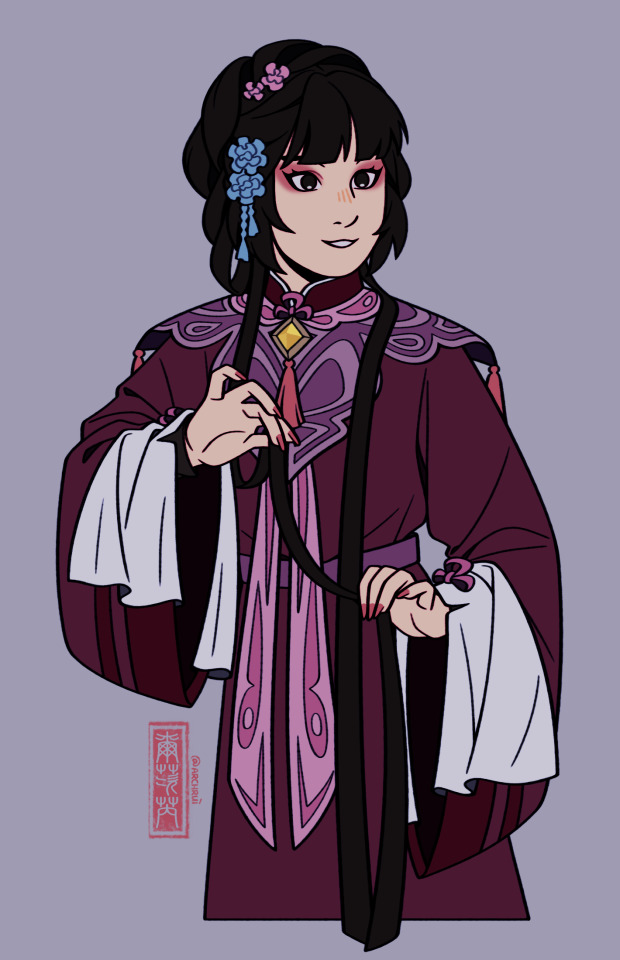
54 notes
·
View notes
Text
变脸 (Bianlian; "face changing") in Sichuan opera
89K notes
·
View notes
Note
Hi my friend wanted to ask about Chinese Opera and the red pom poms on their hats and their significance. I asked my mom and she said they were for decoration so I just wanted clarification
Hi! Thanks for the question, and sorry for taking ages to reply!
The pom poms you see on 盔头/kuitou (Chinese opera headdresses) are called 绒球/rongqiu (lit. "velvet ball"). They are often red, but can also be other colors, and vary in size. Ronqiu are decorative and serve to distinguish the many different types of kuitou from one another. Each type of kuitou is distinct in the number, size, and color of rongqiu that it's decorated with (of course, not all kuitou have rongqiu).
Below - a few different types of Beijing opera kuitou decorated with rongqiu (x):

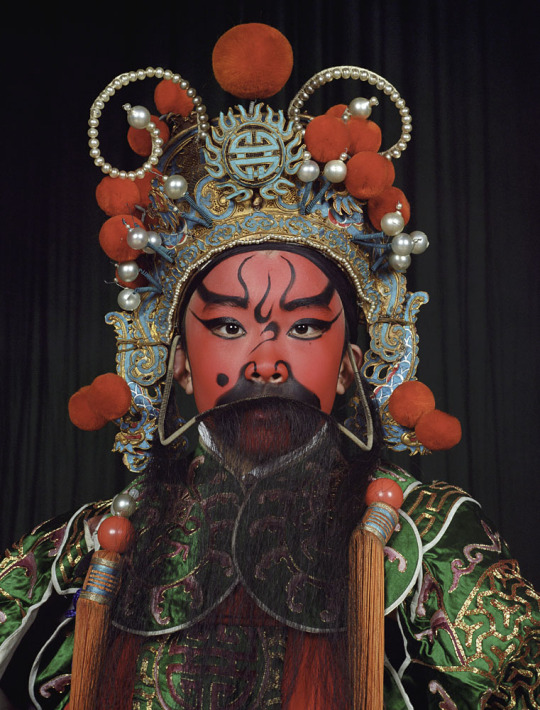
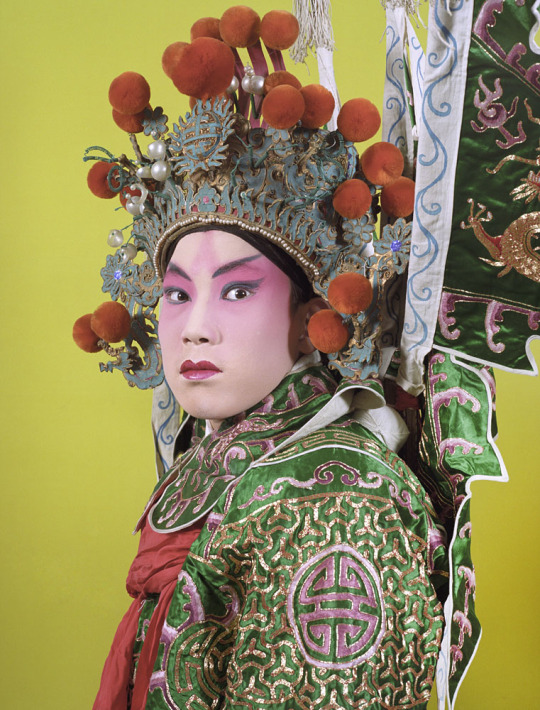
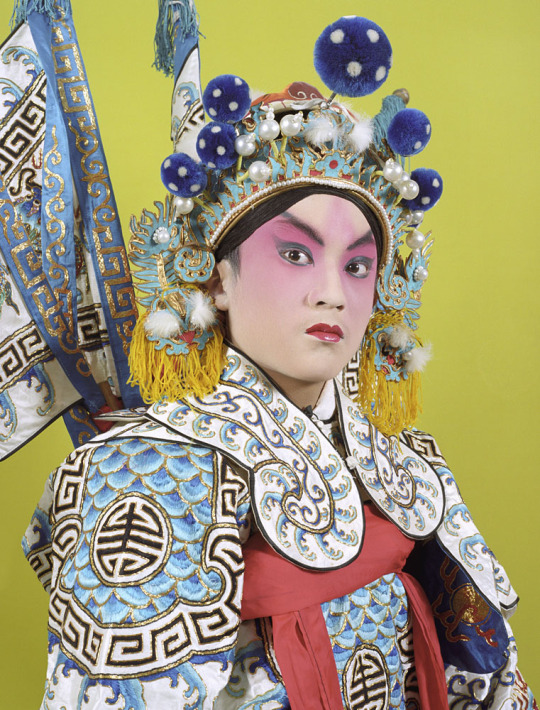

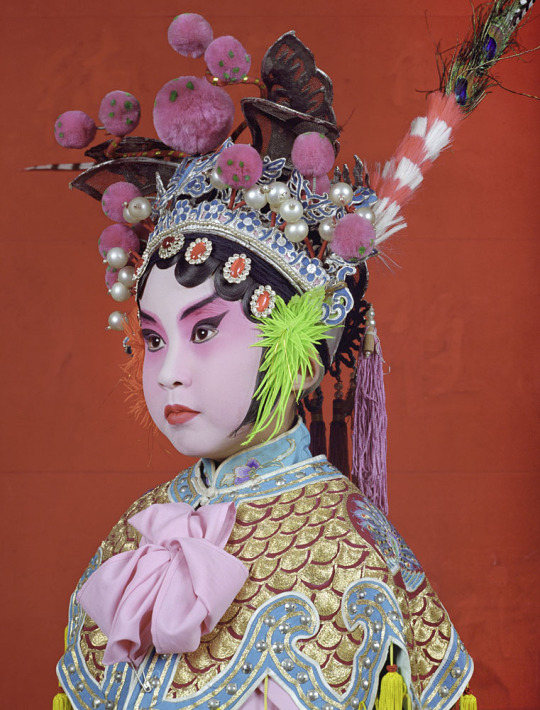
Rongqiu isn't used just for Chinese opera performances - it's a very common decorative item for Chinese headwear, especially for traditional/folk performances.
Below - examples of rongqiu use in folk custom/performance costumes, left to right: 1) 游神/youshen (wandering gods) procession in Fujian (x), 2) 英歌舞/yingge wu (yingge dance) performer in Guangdong (x), 3) & 4) 高跷/gaoqiao (stilt walking) performers in a 社火/shehuo parade in Gansu (x):

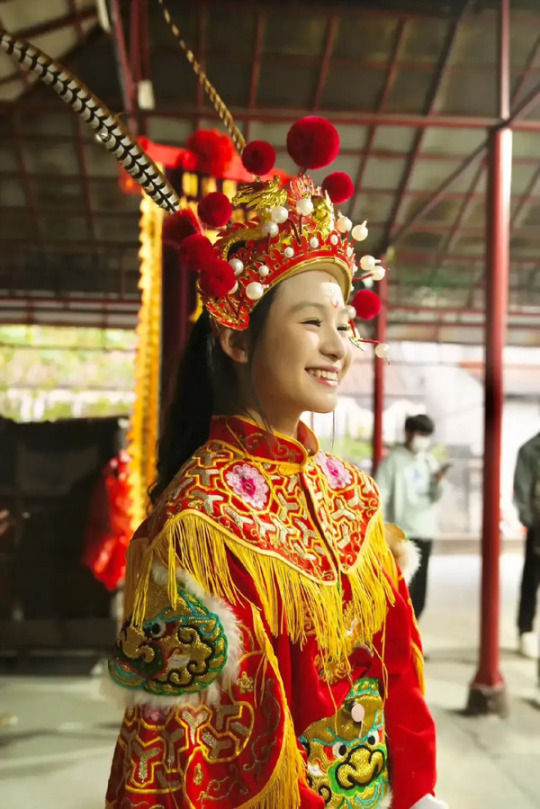

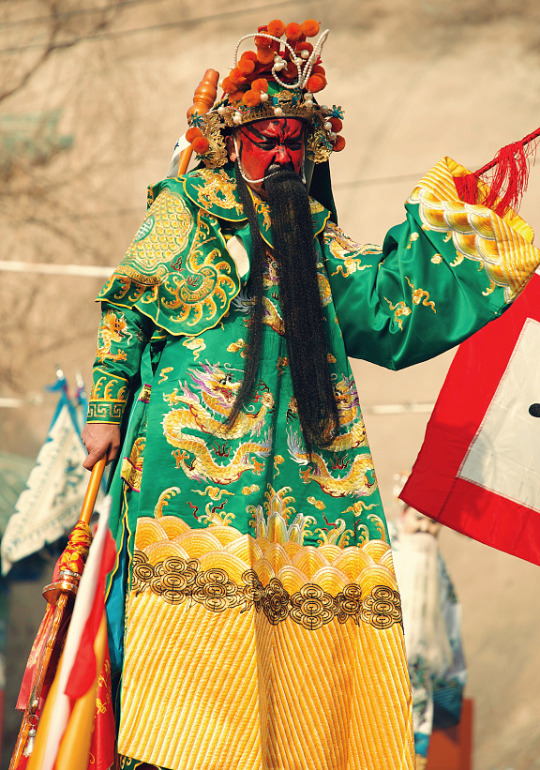
As a festive decoration, rongqiu was also widely used on bridal guan (crowns) from the Qing dynasty into the modern day.
Below - examples of rongqiu use in historical bridal guan: Left - a bride during the late Qing dynasty, circa 1890 (x); Right - a bride during the Republican era/minguo, in 1939 (x):
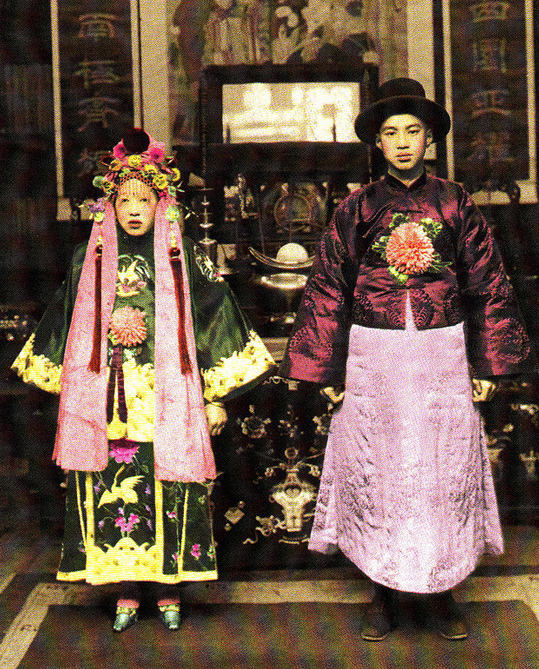
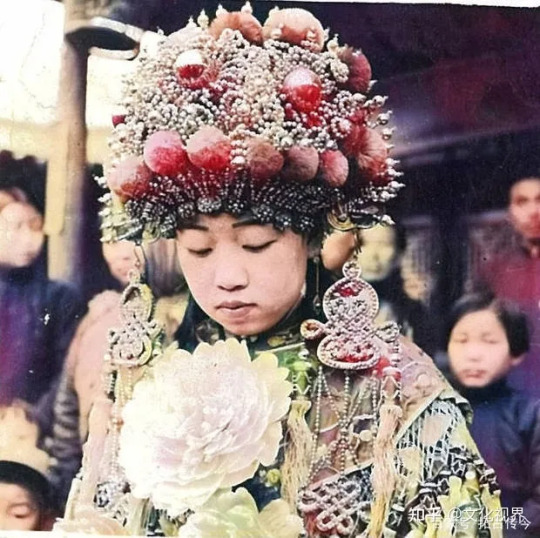
For some reason it's been extremely difficult to find sources on the origin of rongqiu that would shed more light on its significance, but based on historical paintings the use of rongqiu as a head ornament may have originated in the Qing dynasty. During the late Qing dynasty, it was fashionable among women to wear rongqiu on the sides of their hair, as can be seen in the paintings below (x):

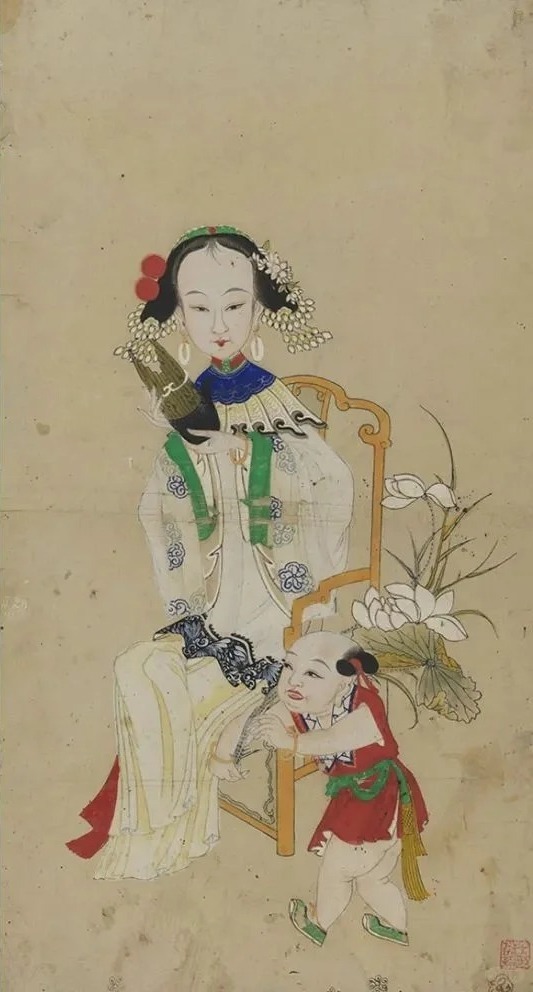
This particular style of rongqiu hair ornament was depicted in the 2012 historical cdrama 娘心计/Mother's Scheme:
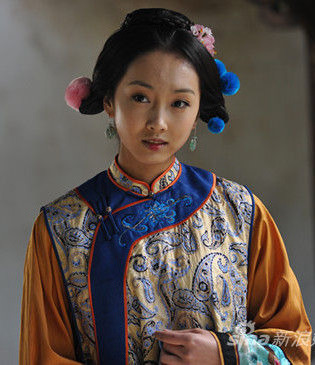
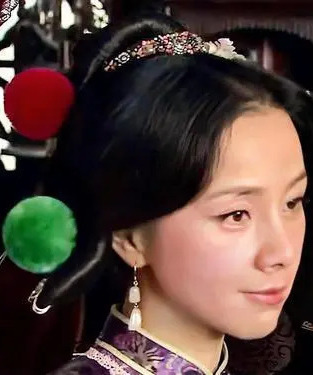
For more references, please see my rongqiu and kuitou tags.
If anyone has more information on the significance of rongqiu, please do share!
Hope this helps ^^
#rongqiu#pompoms#kuitou#chinese opera#opera costume#xifu#hanfu#history#reference#ask#reply#junpeicindystories#chinese fashion#chinese clothing#china
504 notes
·
View notes
Text

Happy TDOV everyone!
#yix gallery#digital art#trans day of visibility#transgender day of visibility#canton opera#chinese art#trans pride#trans#chinese opera
366 notes
·
View notes
Text
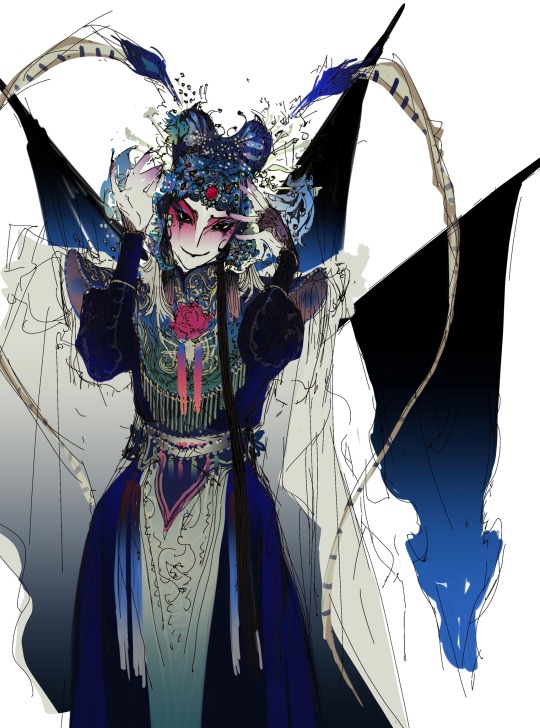
finished!
#art#drawing#digital art#digital drawing#doodle#illustration#chinese opera#original art#design#blue#original character
644 notes
·
View notes
Text

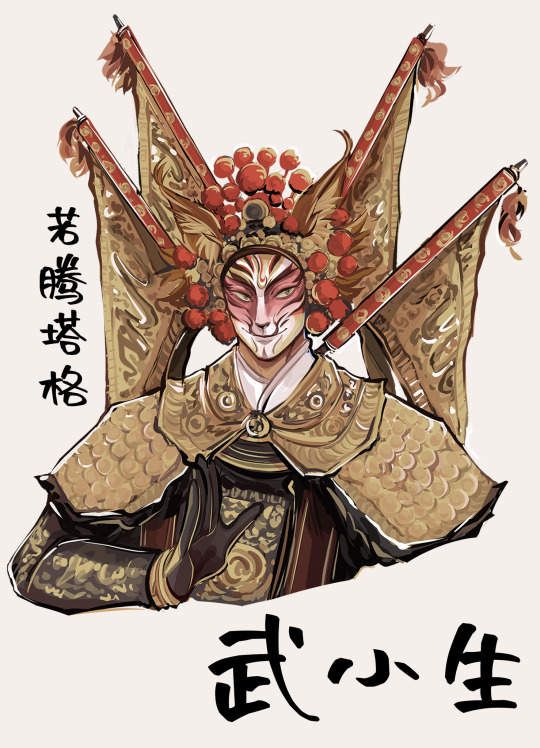
Cats! But make it Chinese Opera! When I posted the initial exploration art of Tugger I had mainly referenced Peking Opera, but since then I think the style has grown to be a combination of multiple genres of opera haha
Since they are both sons of Old Deuteronomy, I wanted them to have elaborate costumes and roles that will stand out amongst the others! Tugger is playing the 武小生 (Wu Xiao Sheng) role and Munkustrap is playing the 长靠武生 (Chang Kao Wu Sheng) role. 武生 are martial characters and warriors, Munkustrap’s specific role is a high ranking warrior defined by using a polearm while Tugger plays a younger warrior. Although my explanation is short there are actually a lot more details regarding the difference in singing tone, costumes, and personality between each role! I’ve only started researching about this when i started this project so unfortunately I am still not very knowledgeable about Chinese Opera ><; but hopefully I get to learn more as I continue exploring with this project 🥰
The Chinese text in the box behind Munkustrap reads: The Hero Cat
The Chinese text in the box behind Tugger reads: The Rock and Roll Cat
#rum tum tugger#munkustrap#cats the musical#cats musical#cats broadway#chinese opera#peking opera#tugger#munk#deuteronomy brothers#deut bros#Chinese opera art#Peking opera art#Chinese opera au#my art#meatball art
610 notes
·
View notes
Text
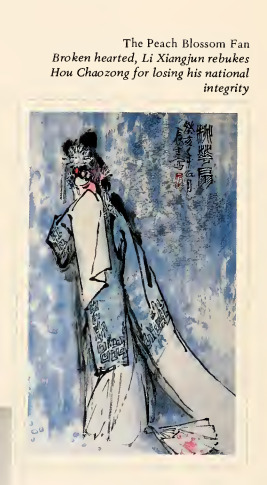

Wip
Struggling with the hairpins
141 notes
·
View notes
Photo

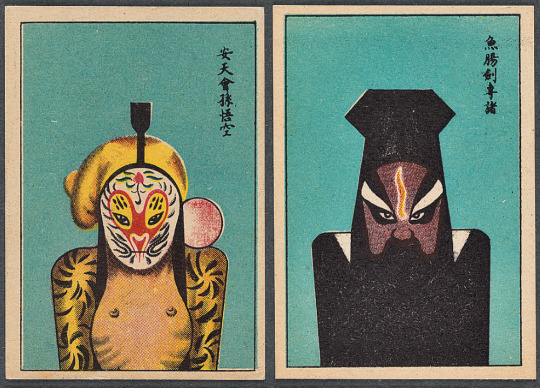
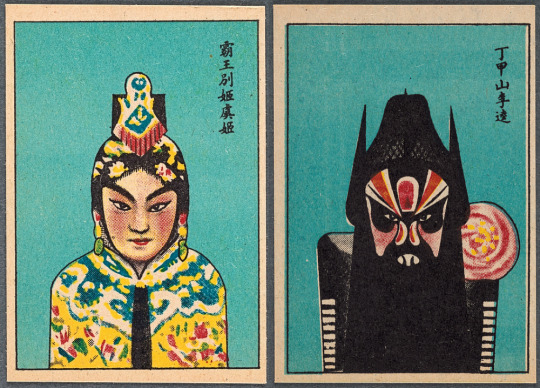
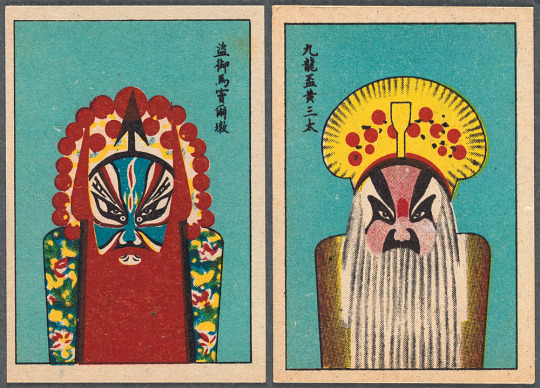


Cigarette cards featuring Chinese opera masks, 1900-1950.
The NY Public Library
1K notes
·
View notes
Text
I am presently preparing for final exams and wrapping up my final case studies for this semester, but I would like to share an opera that features Nezha outside of the widely known Havoc in Heaven where he is in combat with Sun Wukong. Today, we are going to discuss the opera Chentangguan (陳塘關), known also as The Birth of Nezha (哪吒出世) and Nezha Fights the Sea (哪吒鬧海).

The plot of this opera closely follows the origin story of Nezha as is featured within Canonization of the Gods. A defined year for when this opera was initially performed is unclear, though it was written by Xiao Rongchun and appeared within a registry of operas that featured a 'celebratory ascension' in 1824; an online record of this appears here from the Opera Culture Network.
Outside of Peking Opera, Qin Opera, Hui Opera, and Szechuan Opera also regard the performance as Nezha Fights the Sea whereas Hengqi Opera regards it as Golden Pagoda. The opera is present within Gui Opera, Hunan Opera, Chenhe Opera, and Handiao Erhuang (A form of folk opera exclusive to Shaanxi Province originating in 1807) though it is not as prominent.
This opera alongside it's contemporary art forms also focused heavily on the martial arts aspect of Chinese Opera in regards to Nezha and the varying methods his story was retold. Within this post is a brief taste of how this opera was performed, Nezha himself being played by Xu Yingying in this recording.
The full hour long performance can be found here, though it is not nearly as cinematic and was recorded from a considerable distance.
#nezha#li nezha#lmk nezha#monkie kid nezha#nezha 2019#the legend of nezha#third lotus prince#nezha lego monkie kid#nezha reborn#chinese opera#beijing opera#peking opera#chinese mythology#chinese folklore#chinese performing arts
103 notes
·
View notes
Text
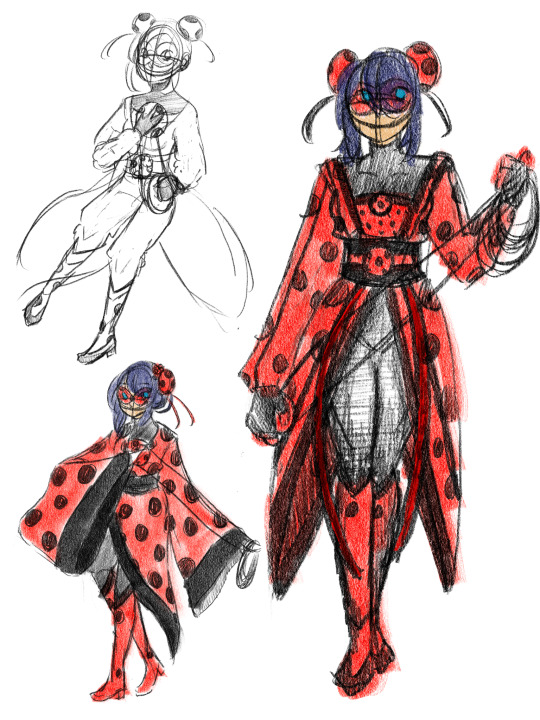

Felt like making some alt. Ladybug designs
#took inspiration from Chinese fashion#hanfu#modern Chinese fashion#and#Chinese opera#listen I haven’t kept up with mlb since season 3 I’m so lost don’t @ me about this#fanart#my art#mlb#miraculous ladybug#miraculous#ladybug#marinette dupain cheng
91 notes
·
View notes
Text
An action sequence from the Chinese opera 白蛇传·情/Tale of the White Snake, which showcases Chinese opera water sleeves (水袖) and spear kicking (踢枪)
9K notes
·
View notes
Note
Hi I was wondering what type of clothing do Beijing Opera actors wear? Is it specific type of costumes or variation of hanhfu?
Hi! Thanks for the question, and sorry for taking ages to reply!
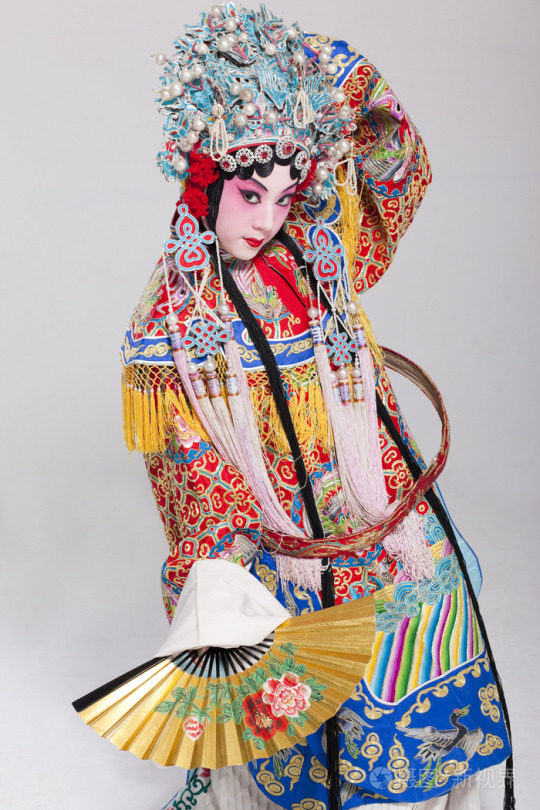
Beijing opera actors wear Chinese opera costumes called 戏服/xifu (lit. “theatrical clothing”), which can be considered a variation of hanfu depending on the style. I have more information in my post here, please check it out! ^^
I also found this Zhihu article (in Chinese) with pictures and descriptions of different styles of Beijing opera costumes as worn by specific characters. According to the article, Beijing opera costumes are mainly based on Ming dynasty hanfu styles, with some theatrical modifications. Because Beijing opera arose and developed during the Qing dynasty, the costumes may also have characteristics of Qing dynasty and Manchu clothing. The article is very informative and I highly recommend it for those interested in Beijing opera costumes!
Below - pictures of various Beijing opera costumes from the article:
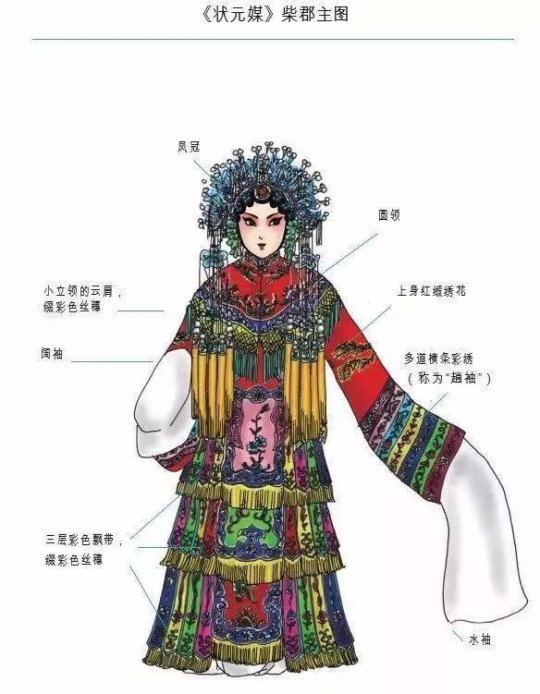
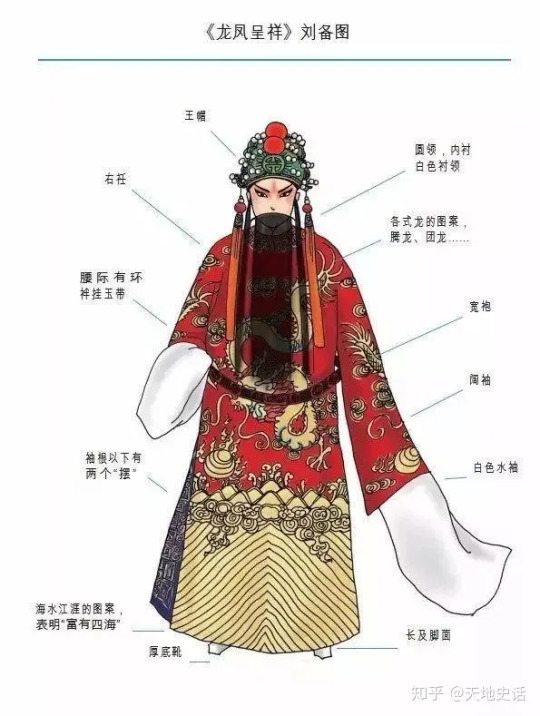

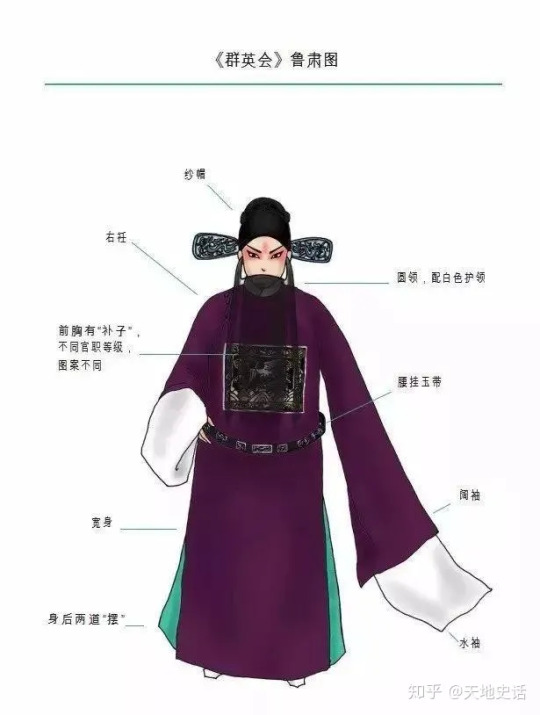
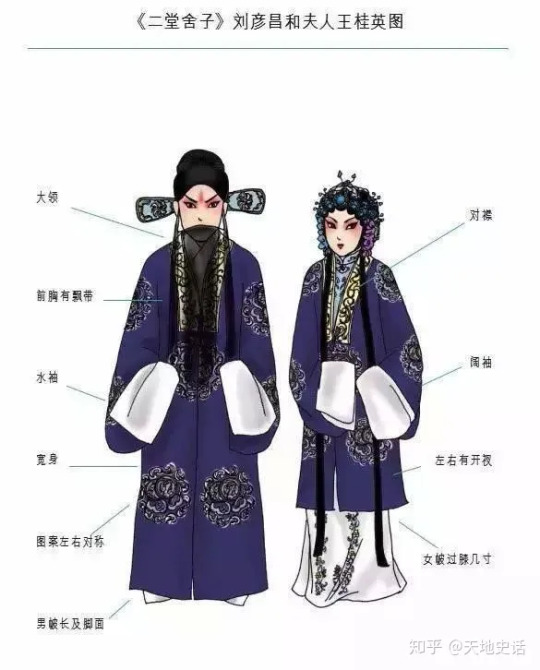


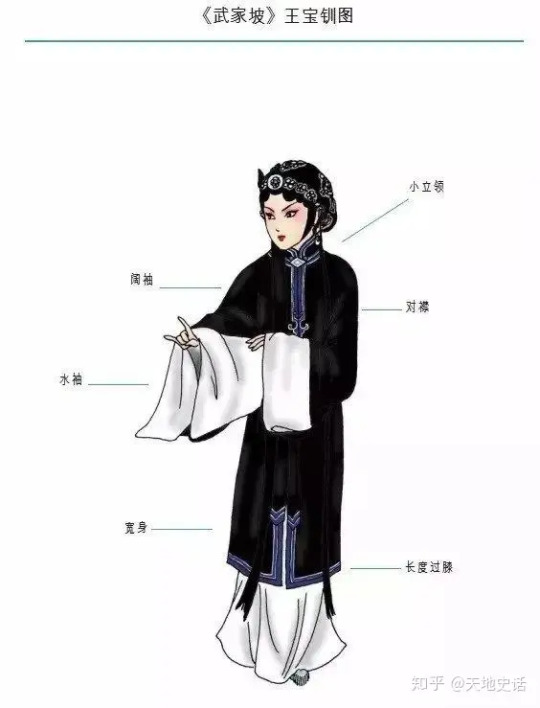
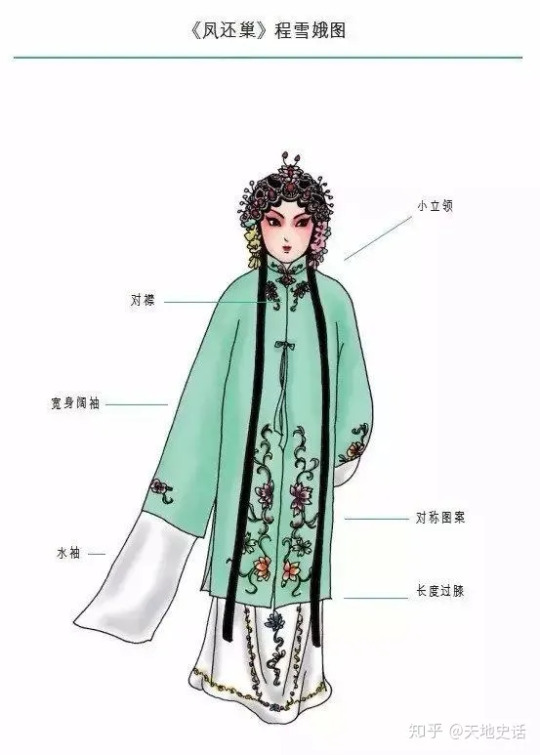
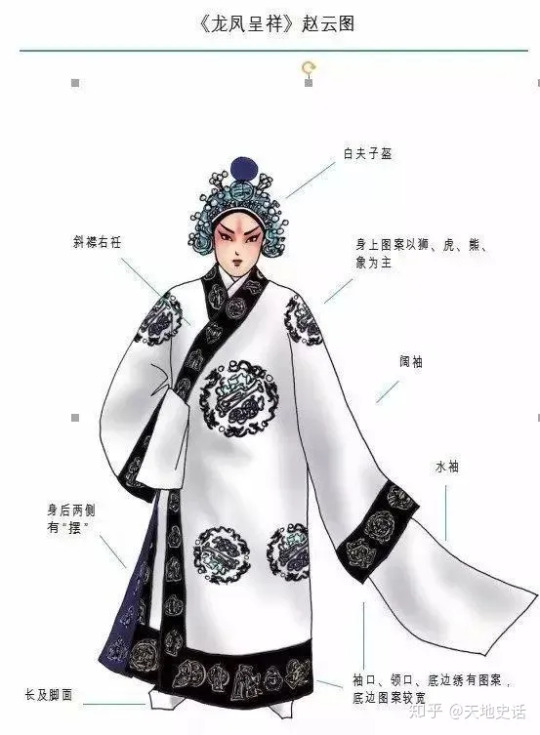



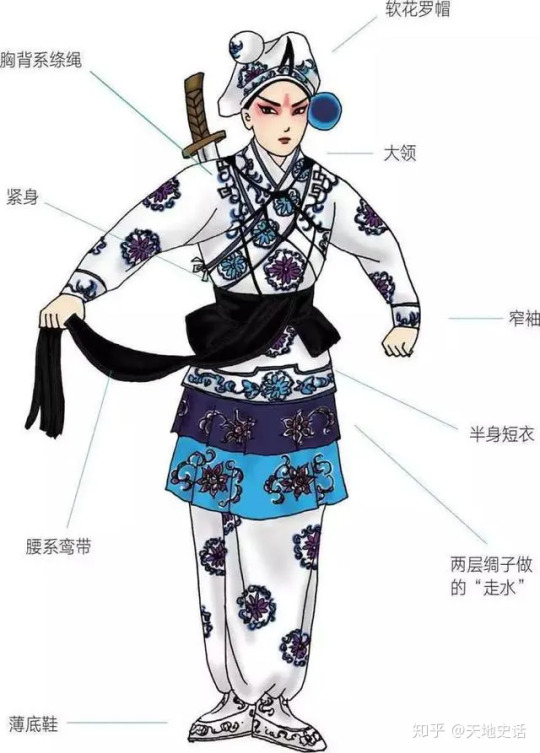


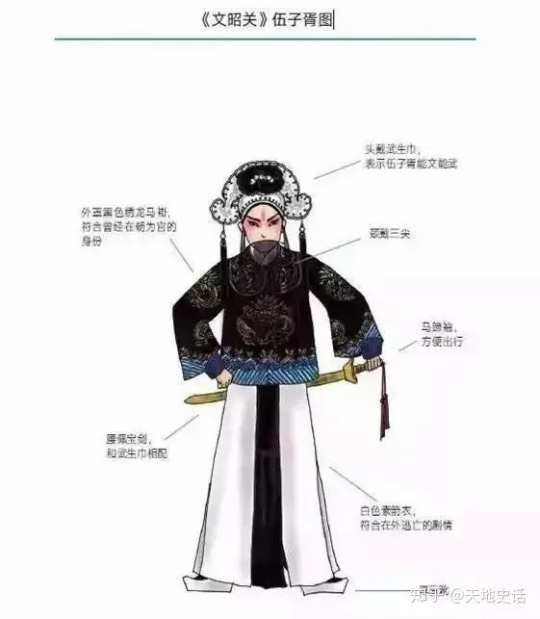
For more information and references, please see my Beijing opera, Chinese opera, and opera costume tags.
Hope this helps! (Beijing opera image via)
#beijing opera#chinese opera#opera costume#hanfu#xifu#art#ask#reply#>100#history#reference#chinese clothing#chinese fashion#china
235 notes
·
View notes
Text
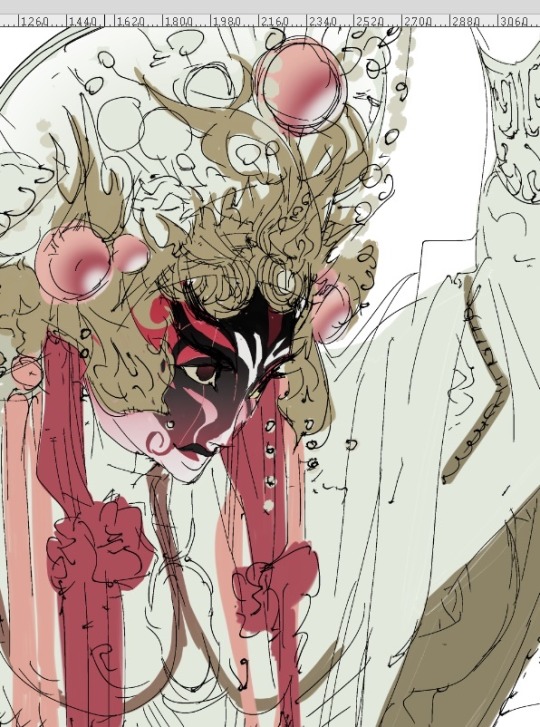
画一半发一下
#art#drawing#digital art#digital drawing#chinese opera#design#in progress#original art#original design
272 notes
·
View notes
Text

曲高未必人不识
自有知音和清词
红缨猎猎剑流星
直指怒潮洗海清
a portrait of yun jin <3
#my friends kidnapped me and forced me to play genshin a long while back#i loved her#but i havent played in Months bc im no gamer/anime guy#yun jin#genshin impact#art#my art#digital art#genshin#yunjin#genshin yun jin#shenhe#rendering this many tiny shiny little details almost killed me this took me a WEEK#pls dont let it flop i need validation#artwork#illustration#artists on tumblr#painting#chinese opera#digital drawing#genshin yunjin#genshin fan art#genshin fanart
109 notes
·
View notes
Text

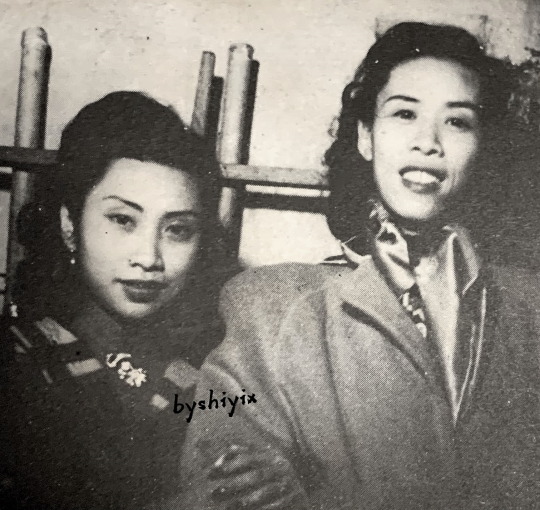
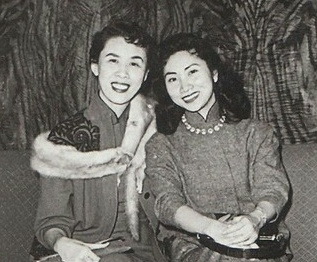
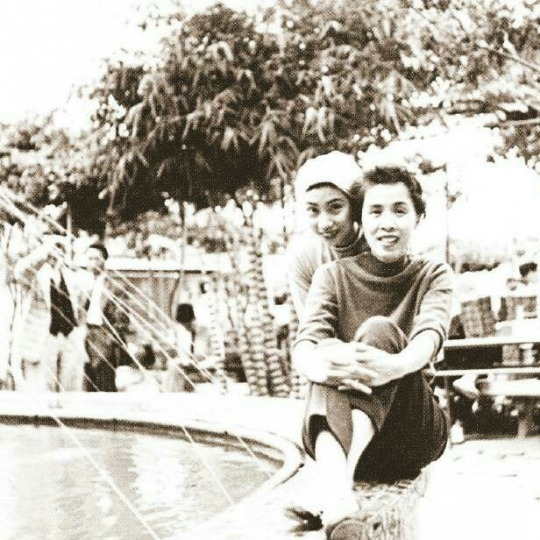

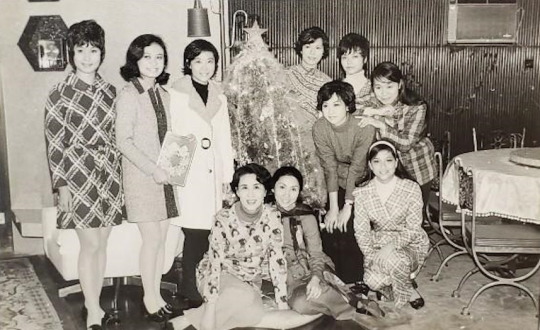
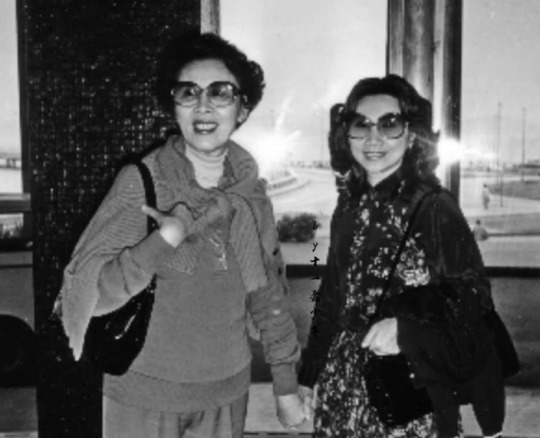

Female Queer Icons of Hong Kong // Yam Kim Fai (任劍輝) and Pak Suet Sin (白雪仙)
Photo 1: Promotional photo for 1955 contemporary movie The Model and the Car (玉女香車) (no video available) (Source: LCSD Museum Collection Search Portal)
Photo 4: Photo from Sin Fung Ming Opera Troupe's 1958 trip
Photo 5: Photo from a 1962 newspaper feature on Yam, Pak, and others at their (?) summer villa in Central, Hong Kong
Photo 6: Christmas celebrations with Yam, Pak, and their protégés of the Chor Fung Ming Troupe
Far and away the most iconic duo in Cantonese opera, Yam Kim Fai (任劍輝) and Pak Suet Sin (白雪仙) – commonly referred to simply as Yam-Pak (任白) – were famed for their partnership both on and off the stage… Click below to learn more!
Edit on 28/07/2023: Updated to link to a photo of the entrance to the Hong Kong Heritage Museum’s Pop Culture 60+ exhibit, and to add information regarding Yam and Pak's marriage status.
Iconic? How?
Yam-Pak are the face of Cantonese opera; you can't talk about the latter without mentioning the former. It's to the point where a gigantic picture of them graces the entrance to the Hong Kong Heritage Museum’s permanent exhibition on Hong Kong pop culture’s evolution across the past 60 years (“Hong Kong Pop 60+”) - they are the first thing you see upon entering!
Best known as the originators - with Yam playing the male leads and Pak the female leads - of five masterpieces of Cantonese opera, namely:
1. Princess Cheung Ping (帝女花)
2. The Legend of the Purple Hairpin (紫釵記)
3. The Dream Tryst in the Peony Pavilion (牡丹亭驚夢)
4. The Reincarnation of Lady Plum Blossom (再世紅梅記)
5. Butterfly and Red Pear Blossom (蝶影紅梨記)
(Note: Princess Cheung Ping, Purple Hairpin, and Butterfly and Red Pear Blossom were made into abridged movie versions, with the Sin Fung Ming troupe members reprising their roles from the theatre productions. Also, the "Fragrant Sacrifice" (香夭) duet from Princess Cheung Ping (movie clip) is one of - if not the most - famous songs in Cantonese opera.)
Yam and Pak were the leading pair and co-founders of the legendary Sin Fung Ming Opera Troupe (仙鳳鳴劇團; 1956-1961), which is widely held to have pushed Cantonese opera forward as an artform due to Pak and scriptwriter Tong Tik Sang’s (唐滌生) emphasis on poetic libretti and adapting source material from Chinese literature and history. (Note: it has been common practice since the 1930's for Cantonese opera troupes to be founded by key actor(s).)
They were also very active in the Hong Kong film industry in the 1950's, being paired in over 40 movies together across roughly 8 years. One of those – the aforementioned Butterfly and Red Pear Blossom (蝶影紅梨記) – is the sole Cantonese opera movie on the Hong Kong Film Archive’s 100-Must See Hong Kong Movies list (IMDB list / archived version of the official PDF). It's a well-deserved inclusion - check out this beautifully-shot dance scene.
Even their post-retirement activities had a significant effect on the industry! In the early 1960’s, they held auditions for prospective students and provided - for free - systematic, hands-on training to those who passed; Yam and Pak even hired other veterans to teach skills they personally were not as familiar with. Prior to this, apprentices were expected to learn primarily from observing their masters, and to pay handsomely for the privilege. Yam-Pak’s methods proved exceedingly effective: the Chor Fung Ming Opera Troupe (雛鳳鳴劇團; 1963-1992) starring their apprentices reigned supreme in the 1970’s-1980’s. Following this success, Cantonese opera institutes - most notably the major 1900s-era guild, the Chinese Artists Association of Hong Kong (八和會館) - started to offer systematic coaching to young hopefuls in the 1980's.
Okay, so why are they queer icons specifically?
The lazy answer is that they're queer icons because nearly all of Yam's roles were male, so Gender is involved by default, and since most hit Cantonese operas of the time were romances, that means you get to see two female actors performing being in love onscreen (and also on stage, but there aren't any video recordings from back then). So far, so Takarazuka Revue.
Female actors playing male roles in Cantonese opera
To give some context, each Cantonese opera performer specialises in one of four major role-types, and Yam was a sung (生) - i.e. an actor specialised in playing standard male roles. Female sung were fairly common in the 1910's-1930's due to women being banned from performing with men during that period, but when the ban lifted in the mid-1930's, many troupes shifted towards cis-casting. Yam was pretty much the only one whose popularity survived the transition. Just take a look at the huge number of Cantonese opera movies produced during the 1950’s-1960’s – you’ll be hard-pressed to find a female sung other than Yam, let alone one with top billing.
Happily, thanks to Yam's immense popularity, her profilic film career (over 300 movies!), and the prominence of Sin Fung Ming works in the Cantonese opera canon, there has been a resurgence in female sung which endures to this day. Two noteworthy examples are Yam's protégé Sabrina Lee/ Loong Kim Sang (龍劍笙) - a star in her own right - and Joyce Koi/ Koi Ming Fai (蓋鳴暉), one of the biggest names still active in the industry.
(Note: perhaps due to cinema being more "realistic" in nature, Yam's early movies often involved her playing female characters cross-dressing as men, including in some Cantonese opera movies. However, she received increasingly more male roles as her fame grew, and from the mid-1950's onwards she was playing male characters onscreen nearly exclusively-- even in non-Cantonese opera movies! See Photo 1 above.)
What sets Yam and Pak apart is that they were particularly known for their chemistry. Long before Sin Fung Ming's formation in 1956, the advertising copy for their first Cantonese opera movie together - Frolicking with a Pretty Maid in the Wineshop (酒樓戲鳳, 1952) - declared "Only this movie has Yam-Pak flirting on the silver screen" (source - 華僑日報 1952/05/23-26). And indeed, they were popular for their flirtatious duets: their Cantonese opera works invariably contained at least one, and such scenes made it into some of non-Cantonese opera (i.e. "contemporary") movies too. In fact, there are not one but two contemporary movies where Yam and Pak's characters are not paired up and yet still sing a duet together in such a way that their significant other(s) become convinced that the two are in romantically interested in each other - see 1952's Lovesick (為情顛倒) and 1956's The Happy Hall (滿堂吉慶) - a weirdly specific situation which doesn't crop up in the other, non-Yam-Pak movies I have seen.
Speaking of contemporary movies, let's talk about a certain plotline that keeps cropping up in works featuring the both of them and where Yam plays a woman! Six of the eleven movies which fit that criteria involve Yam's character cross-dressing as a man (a common characteristic across Yam's handful of female roles), and Pak's character falling for her. Nothing ever comes of it, of course, but, um. It was certainly a trend. Actually, even their very first movie together - 1951's Lucky Strike (福至心靈) - falls into this category.
Such storylines, and the emphasis on their chemistry, are particularly interesting given that both Yam and Pak remained ostensibly unmarried throughout. This was unusual for female performers of their stature, who tended to wed in their twenties, often to fellow-actors or wealthy men (e.g. Hung Sin Nui/紅線女, Fong Yim Fun/芳艷芬, and Tang Pik Wan/鄧碧雲)... In contrast, by the time Yam-Pak retired from the stage in 1961, they were both over 30 years old and without husbands.
Also, did I mention they were popularly believed to be living together? There doesn't seem to be any conclusive evidence either way... although it's a little strange that separate newspaper pictorials depicting "Yam at home" and "Pak at home" seem to be of the same location... however what is conclusive is that they did spent a lot of time together offstage. Pak has talked about how when they had no guests over, Yam would watch TV by herself while Pak was in the living room (source - p93), and protégé Mandy Fung/ Mui Suet Sze (梅雪詩) has said that Pak would sometimes cook for Yam at home (source - 03:53~). They would also celebrate birthdays, New Year's, and Christmas together (see Photo 6 for an example of the latter).
Shortly after Yam's passing in 1989, Pak set up the Yam Kim Fai and Pak Suet Sin Charitable Foundation (任白慈善基金) to support the arts and provide welfare for the elderly. In 1996, Pak made a large donation to Hong Kong University, resulting in one of the buildings being renamed Yam Pak Building (任白樓) in thanks (source).
Thanks for reading! Please feel free to DM me or send an ask if you have any questions, or are just interested in learning more.
If you made it here, have this bonus piece of trivia - Yam and Pak were also well-acquainted with Hong Kong's preeminent queer icon, Leslie Cheung (張國榮), who was a massive fan of theirs. Sadly there don't seem to be any pictures of them before Yam's passing, but here's one of Pak (centre) having afternoon tea with Cheung (left) and his long-term romantic partner Daffy Tong (唐鶴德) (right) at the Cova cafe in the Pacific Place shopping mall.
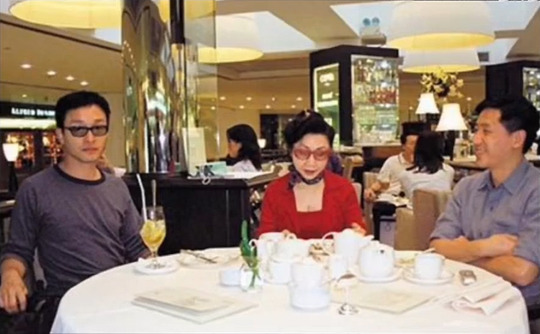
#wlw recommendations#sapphic#lgbtq#asian lgbtq#hong kong#theatre#cantonese opera#chinese opera#yam kim fai#leslie cheung#pak suet sin#yampak#yambak#pak sheut sin#bak sheut sin#hong kong queer icons#not me hastily adding tags because i keep forgetting certain ones
151 notes
·
View notes
Text



the tale of the white snake · chinese national peking opera company / heaven official's blessing · mo xiang tong xiu
#the tale of the white snake#heaven official's blessing#tgcf#chinese opera#peking opera#beijing opera#danmei#words#love#mine*#hualian
127 notes
·
View notes